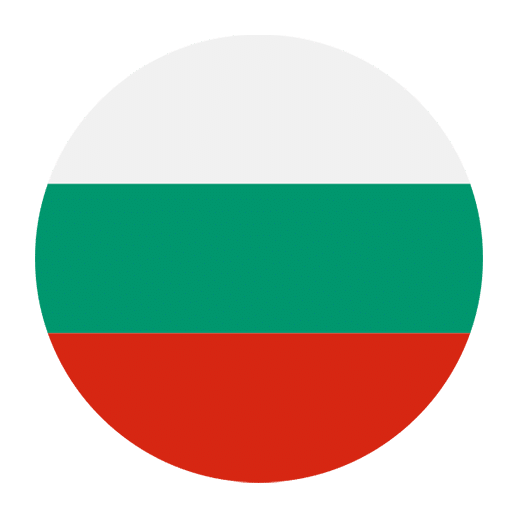Learning a new language can be both exciting and challenging, especially when it comes to memorizing vocabulary. Bulgarian, with its unique Cyrillic script and Slavic roots, offers a fascinating linguistic journey but also presents a set of challenges for English speakers. One effective way to overcome these challenges is by using mnemonic devices. These memory aids can significantly enhance your ability to remember and recall Bulgarian vocabulary. In this article, we will explore various mnemonic techniques tailored specifically for learning Bulgarian words.
Understanding Mnemonic Devices
Mnemonic devices are strategies designed to help you remember information more easily. They often involve associating the information you want to remember with something familiar. This can be a visual image, a rhyme, a phrase, or even a story. The goal is to create a mental shortcut that makes the information more memorable.
For language learning, mnemonic devices can be particularly useful. They can help you connect new vocabulary words with concepts or words you already know, making it easier to recall them when needed. Here are some common types of mnemonic devices and how you can use them to learn Bulgarian vocabulary:
1. Visual Imagery
Visual imagery involves creating a mental picture that connects the new word with its meaning. This technique can be very powerful because our brains are wired to remember images better than abstract concepts.
For example, the Bulgarian word for “apple” is “ябълка” (yabalka). To remember this, you could imagine a giant apple with a “Y” carved into it, sitting in a “bulk” of apples. The image of the apple (the meaning) combined with the letters “Y” and “bulk” (part of the word’s sound) can help you recall the word “ябълка.”
2. Association
Association involves linking the new word to something you already know. This could be a word in your native language that sounds similar or a concept that is somehow related.
Take the Bulgarian word for “book,” which is “книга” (kniga). You might associate “kniga” with the English word “knee” because they sound somewhat similar. You could then create a sentence like, “I rest my book on my knee,” to reinforce the connection.
3. Acronyms and Acrostics
Acronyms and acrostics are useful for remembering lists or groups of words. An acronym is a word formed from the initial letters of a series of words, while an acrostic is a phrase where the first letter of each word corresponds to the first letter of the words you want to remember.
For example, to remember the days of the week in Bulgarian: понеделник (ponedelnik), вторник (vtornik), сряда (sryada), четвъртък (chetvartak), петък (petak), събота (sabota), неделя (nedelya), you could create an acrostic like: “Peter Visits Sarah’s Cat, Peter’s Sister Nelly.”
4. Chunking
Chunking involves breaking down information into smaller, more manageable units. This is especially useful for longer words or phrases.
The Bulgarian word for “refrigerator” is “хладилник” (hladilnik). You could break it down into smaller parts: “hla-dil-nik.” You might then think of “hla” as “cold” (similar to “chilly”), “dil” as a shortened form of “deal” (as in making a deal to keep food fresh), and “nik” as a common Slavic suffix. This can make the longer word easier to remember.
Applying Mnemonics to Bulgarian Vocabulary
Now that we’ve covered the types of mnemonic devices, let’s look at how to apply them to specific Bulgarian vocabulary words. Here are some examples to get you started:
1. Family Members
– Мама (mama) – Mother
Visualize your mother saying “mama” in a loving tone.
– Татко (tatko) – Father
Imagine your father wearing a “tattoo” with “ko” written on it.
– Сестра (sestra) – Sister
Picture your sister wearing a “sari” (a traditional Indian garment), and saying “stra.”
2. Common Objects
– Масло (maslo) – Butter
Think of a “mass” of butter.
– Стол (stol) – Chair
Imagine a “stool” with “l” written on it.
– Врата (vrata) – Door
Visualize a door with a “rat” (ra) trying to get in.
3. Food and Drink
– Хляб (hlyab) – Bread
Picture a loaf of bread shaped like the letter “h.”
– Вино (vino) – Wine
Simply think of the English word “vino,” which also means wine.
– Яйце (yaytse) – Egg
Imagine an egg saying “yay!”
4. Numbers
– Едно (edno) – One
Think of the first letter “E” as the start of “one.”
– Две (dve) – Two
Visualize a pair of “doves.”
– Три (tri) – Three
Picture a “tree” with three branches.
5. Days of the Week
– Понеделник (ponedelnik) – Monday
Imagine starting your week (Monday) with a “new deal.”
– Вторник (vtornik) – Tuesday
Think of the second day of the week (Tuesday) as “V” for “victory.”
– Сряда (sryada) – Wednesday
Picture a “sari” being worn in the middle of the week.
– Четвъртък (chetvartak) – Thursday
Visualize the fourth day (Thursday) with “che” (like “check”) and “vr” (like “verse”).
– Петък (petak) – Friday
Think of “pet” and “act” to remember Friday.
– Събота (sabota) – Saturday
Imagine spending Saturday in a “sauna.”
– Неделя (nedelya) – Sunday
Think of “need a day” to rest on Sunday.
Creating Your Own Mnemonics
While the examples above can be helpful, the most effective mnemonics are the ones you create yourself. Personalizing mnemonics makes them more memorable. Here are some tips for creating your own mnemonic devices:
1. Use Familiar References
Connect new vocabulary to things you are already familiar with. This could be people you know, places you’ve been, or experiences you’ve had. The more personal the connection, the better.
2. Be Creative
Don’t be afraid to use your imagination. The more vivid and unusual the image or story, the more likely you are to remember it.
3. Practice Regularly
Use your mnemonics regularly to reinforce your memory. Review them daily and try to use the new vocabulary in sentences or conversations.
4. Combine Techniques
Feel free to combine different mnemonic techniques. For example, you might use visual imagery and association together for a more powerful memory aid.
Using Mnemonics in Context
While mnemonic devices are useful for memorizing individual words, it’s important to practice using the vocabulary in context. Here are some ways to do this:
1. Flashcards
Create flashcards with the Bulgarian word on one side and the mnemonic on the other. Use these flashcards to test yourself regularly.
2. Language Apps
Use language learning apps that incorporate mnemonics. Some apps are specifically designed to help you create and remember mnemonic devices.
3. Practice with Native Speakers
If possible, practice speaking with native Bulgarian speakers. This will help you use the vocabulary in real-life situations and reinforce your memory.
4. Write Sentences
Write sentences or short paragraphs using the new vocabulary. This will help you practice using the words in context and improve your overall language skills.
5. Listen and Repeat
Listen to Bulgarian audio resources, such as podcasts, songs, or audiobooks. Try to identify the words you’ve learned and repeat them out loud.
Conclusion
Learning Bulgarian vocabulary can be a rewarding experience, and mnemonic devices can make the process much easier. By using visual imagery, association, acronyms, chunking, and other mnemonic techniques, you can enhance your memory and recall of new words. Remember to create your own personalized mnemonics, practice regularly, and use the vocabulary in context to reinforce your learning. With these strategies, you’ll be well on your way to mastering Bulgarian vocabulary and enjoying the rich cultural and linguistic heritage of Bulgaria.

